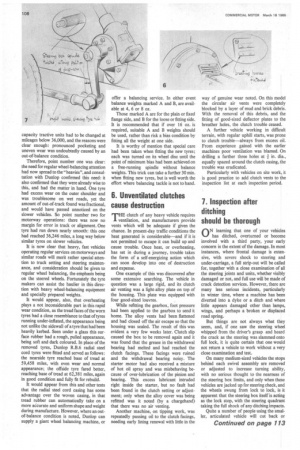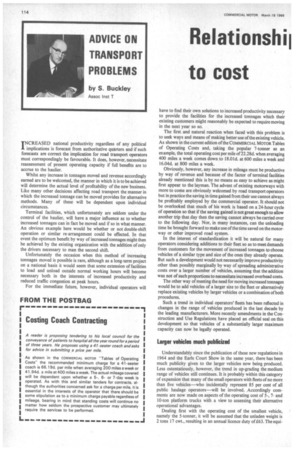7. Inspection after ditching should be thorough
Page 110

Page 116

If you've noticed an error in this article please click here to report it so we can fix it.
ON learning that one of your vehicles has ditched, overturned or become involved with a third party, your early concern is the extent of the damage. In most instances, where frontal damage is extensive, with severe shock to steering and under-carriage, a full strip-out will be called for, together with a close examination of all the steering joints and units, whether visibly damaged or not, and full use will be made of crack detection services. However, there are many less serious incidents, particularly in winter time, where a machine has been diverted into a dyke or a ditch and where little appears damaged other than lamps, wings, and perhaps a broken or displaced road spring.
But things are not always what they seem, and, if one saw the steering wheel whipped from the driver's grasp and heard the crack as the steering was slammed onto full lock, it is quite certain that one would not return a vehicle to work without a very close examination and test.
On many medium-sized vehicles the stops behind each swivel assembly are removed or adjusted to increase turning ability, with no serious thought to the nearness of the steering box limits, and only when these vehicles are jacked up for steering check, and the wheels swung from lock to lock, is it apparent that the steering box itself is acting as the lock stop, with the steering quadrant taking the full shock of any ditching impacts.
Quite a number of people using the smaller, articulated vehicle will cut back or 'INCREASED national productivity regardless of any political 1 implications is forecast from authoritative quarters and if such forecasts are correct the implication for road transport operators must correspondingly be favourable. It does, however, necessitate reassessment of present operating capacity if full benefits are to accrue to the haulier.
Whilst any increase in tonnages moved and revenue accordingly earned are to be welcomed, the manner in which it is to be achieved will determine the actual level of profitability of the new business. Like many other decisions affecting road transport the manner in which the increased tonnage can be moved provides for alternative methods. Many of these will be dependent upon individual circumstances.
Terminal facilities, which unfortunately are seldom under the control of the haulier, will have a major influence as to whether increased tonnages can in fact be moved and if so in what manner. An obvious example here would be whether or not double-shift operation or similar re-arrangement could be effected. In that event the optimum benefit by way of increased tonnages might then be achieved by the existing organization with the addition of only the drivers necessary to man the second shift.
Unfortunately the occasion when this method of increasing tonnages moved is possible is rare, although as a long-term project on a national basis it would seem that some extension of facilities to load and unload outside normal working hours will become necessary both in the interests of increased productivity and reduced traffic congestion at peak hours.
For the immediate future, however, individual operators will




































































































































































